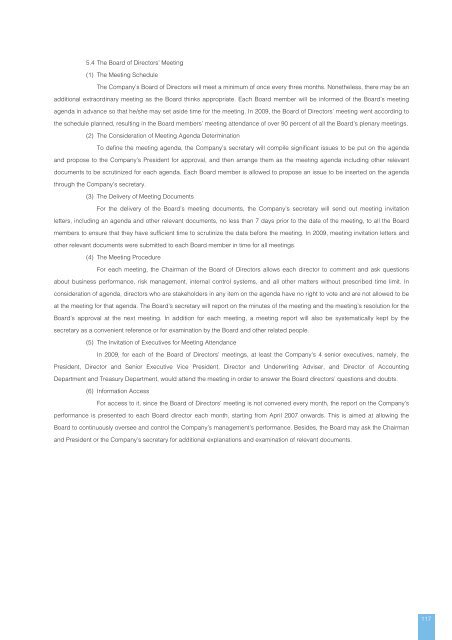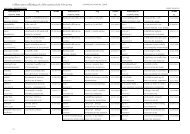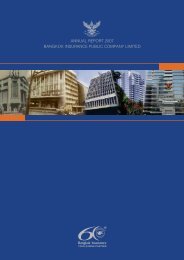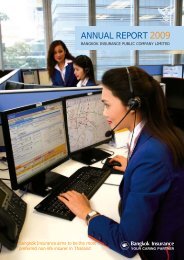PRINCIPLES OF GOOD CORPORATE GOVERNANCE
PRINCIPLES OF GOOD CORPORATE GOVERNANCE
PRINCIPLES OF GOOD CORPORATE GOVERNANCE
You also want an ePaper? Increase the reach of your titles
YUMPU automatically turns print PDFs into web optimized ePapers that Google loves.
5.4 The Board of Directors’ Meeting<br />
(1) The Meeting Schedule<br />
The Company’s Board of Directors will meet a minimum of once every three months. Nonetheless, there may be an<br />
additional extraordinary meeting as the Board thinks appropriate. Each Board member will be informed of the Board’s meeting<br />
agenda in advance so that he/she may set aside time for the meeting. In 2009, the Board of Directors’ meeting went according to<br />
the schedule planned, resulting in the Board members’ meeting attendance of over 90 percent of all the Board’s plenary meetings.<br />
(2) The Consideration of Meeting Agenda Determination<br />
To define the meeting agenda, the Company’s secretary will compile significant issues to be put on the agenda<br />
and propose to the Company’s President for approval, and then arrange them as the meeting agenda including other relevant<br />
documents to be scrutinized for each agenda. Each Board member is allowed to propose an issue to be inserted on the agenda<br />
through the Company’s secretary.<br />
(3) The Delivery of Meeting Documents<br />
For the delivery of the Board’s meeting documents, the Company’s secretary will send out meeting invitation<br />
letters, including an agenda and other relevant documents, no less than 7 days prior to the date of the meeting, to all the Board<br />
members to ensure that they have sufficient time to scrutinize the data before the meeting. In 2009, meeting invitation letters and<br />
other relevant documents were submitted to each Board member in time for all meetings.<br />
(4) The Meeting Procedure<br />
For each meeting, the Chairman of the Board of Directors allows each director to comment and ask questions<br />
about business performance, risk management, internal control systems, and all other matters without prescribed time limit. In<br />
consideration of agenda, directors who are stakeholders in any item on the agenda have no right to vote and are not allowed to be<br />
at the meeting for that agenda. The Board’s secretary will report on the minutes of the meeting and the meeting’s resolution for the<br />
Board’s approval at the next meeting. In addition for each meeting, a meeting report will also be systematically kept by the<br />
secretary as a convenient reference or for examination by the Board and other related people.<br />
(5) The Invitation of Executives for Meeting Attendance<br />
In 2009, for each of the Board of Directors’ meetings, at least the Company’s 4 senior executives, namely, the<br />
President, Director and Senior Executive Vice President, Director and Underwriting Adviser, and Director of Accounting<br />
Department and Treasury Department, would attend the meeting in order to answer the Board directors’ questions and doubts.<br />
(6) Information Access<br />
For access to it, since the Board of Directors’ meeting is not convened every month, the report on the Company’s<br />
performance is presented to each Board director each month, starting from April 2007 onwards. This is aimed at allowing the<br />
Board to continuously oversee and control the Company’s management’s performance. Besides, the Board may ask the Chairman<br />
and President or the Company’s secretary for additional explanations and examination of relevant documents.<br />
117







